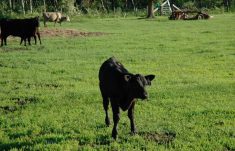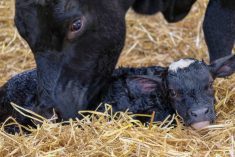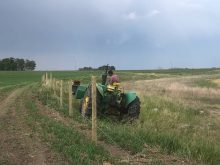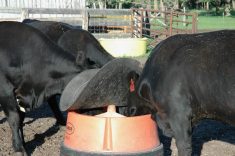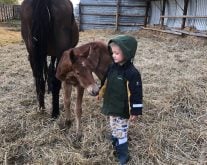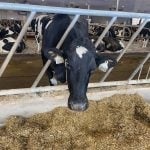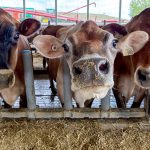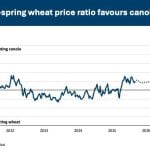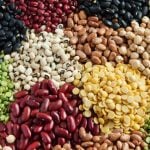Despite some market volatility, the good value of all cattle is holding for the time being.
That’s a good thing because last year, many cow-calf operators bred more replacement heifers that are now calving or about to calve.
Some of these producers told me they throw them into their main cowherd if they are big enough, while others are going to keep them separated until the new breeding season on pasture. I would also treat them as a special group in order to get them bred with a second calf.
Read Also

Visits from family and haying
Mid-summer 2025 saw relatives arriving, amidst baler repairs and haying at the Eppich ranch.
Most people will agree that fresh first-calf cows (no longer called heifers, but new cows) need extra time and care to return to active reproduction. After all, they usually take a few extra weeks to a month to shrink their gravid uterus back to normal.
At the same time, they are new to nursing a newborn calf, and are expected themselves to grow into maturity. It is on my own personal wish-list that all new cows should have at least one or two strong and fertile heat-cycles by the start of a 60-day breeding season.
For example, I have known a few producers over the years who failed this challenge and their operation paid dearly. That’s because many of their young cows struggled with nutritional and health-related issues during the next few months; some failed to conceive and were culled. Yet, I feel it doesn’t have to turn-out adversely, if three special guidelines are implemented in most first calf-cow groups:
Best possible BCS
Maintain an optimum body condition score (BCS) of three to 3.5 (out of five). This work starts in hindsight with a well-balanced overwintering feed and management program that supports a gain of one to 1.5 lbs. per head per day by calving. After calving, a more enriched post-calving lactation diet (62-65 per cent TDN, 12 per cent protein) supports similar growth, yet takes on the extra nutrient demands of producing 10 litres of milk per day for nursing calves.
Account for limited dry matter intake
A new 1,000-lb. beef cow has less feed capacity, so it eats less than a 1,200-lb. brood cow. However, its total energy requirements are no different. As a result, this large nutrient load must be condensed into a denser post-calving diet, if their requirements are met. Given that a post-calving first-calf cow should consume about 2.5 per cent of her bodyweight in dry feed, a typical animal weighing 1,000-1,100 lbs. should consume 25 lbs. of feed on a dry matter basis per day.
Emphasize a well-balanced mineral/vitamin program
After calving until breeding, a well-formulated mineral should be fed at three to four ounces per day. This amount helps build up mineral/vitamin status that promotes active rebreeding and conception. It should be fed in loose form or mixed into the daily diet. My timeless favourite is an 18 per cent calcium, nine per cent phosphorus (three per cent magnesium) mineral (with fortified copper, zinc and selenium, plus extra vitamin A and E), which complements many types of replacement-cow diets made up mostly of drylot forages.
Consequently, here are some pre-pasture examples of post-calving lactation diets for 1,000-lb. first-calf-cows in a three to 3.5 BCS that implement my above three points:
Example 1
- Free-choice alfalfa-grass hay
- 1.0-1.5 kg barley or corn
- 3-4 oz. of 2:1 breeder mineral
Example 2
- 25-30 kg barley silage
- 3.0 kg grass hay
- 0.5 kg canola meal
- 3-4 oz. of 2:1 breeder mineral
Example 3
- 25-30 kg barley silage
- 1.5 kg straw
- 1.0 kg protein distillers’ grains
- 3-4 oz. of 2:1 breeder cattle mineral
The nice thing about these diets is that they are built upon feedstuffs that are readily available to most western provinces. However, there are years of drought and feed shortages, where overwintered first-calf cows become run down by calving time and people are often forced to feed them to increase BCS, afterward.
Fortunately, university field trials demonstrate that high-energy diets (usually meaning more grain is available) should be fed during a few weeks before and a few weeks after the start of breeding season. This allows some thin replacements to “catch up” to the rest of the cowherd by laying down enough body fat to achieve strong heats to be rebred.
It’s a last-resort practice that doesn’t always work. Therefore, I maintain that newly fresh cows are to be separated as a special group — first properly overwintered, calved out and then continuously fed/managed from calving to the breeding season.
Here, they might join the main cowherd on breeding pastures — or they might be bred on special pastures of their own for better chance of successful conception and finally dovetailed into maturity.




